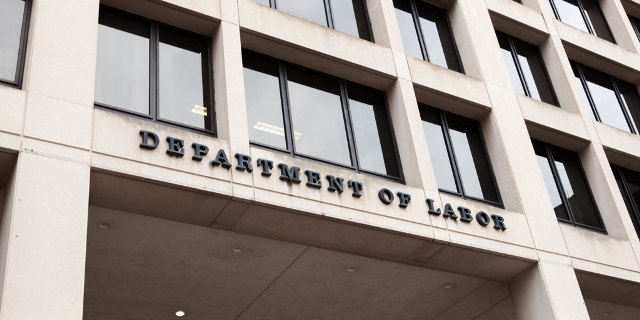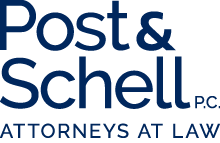

DOL to Begin Enforcement of FFCRA Paid Leave Obligations; Issues Additional FAQs

The Families First Coronavirus Response Act (FFCRA) became effective on Wednesday, April 1, 2020. As we have previously reported, the FFCRA provides for paid leave for certain employees of employers with fewer than 500 employees under The Emergency Family and Medical Leave Expansion Act (EFMLEA) and The Emergency Paid Sick Leave Act (EPSLA).
However, the U.S. Department of Labor (DOL) delayed enforcement of the paid leave provisions under the EFMLEA and EPSLA until April 17, 2020. On Monday, April 20, 2020, the DOL officially announced that this non-enforcement period has come to an end. As such, while covered employers should have been complying with the EPSLA and EFMLEA beginning on April 1, 2020, they are now officially “on notice” that the DOL may institute enforcement proceedings against them for violations of the FFCRA.
In addition to announcing the end of its temporary non-enforcement period, the DOL also published additional guidance and FAQs regarding the FFCRA(FAQs 80-88). The implications of these new FAQs do not appear to be significant and, in most instances, are either redundant of prior FAQs or provide more specific information regarding prior FAQs.
Highlights
Some highlights from the DOL’s new guidance worth mentioning are as follows:
The DOL provides specific guidance to employers on how to compute the number of hours employers must pay an employee who has irregular hours for each day under the EPSLA and EFMLEA, specifically:
- Under the EPSLA, if an employee works an irregular schedule such that it is not possible to determine what hours he or she would normally work over a two-week period, employers must estimate the number of hours. This estimate must be based on the average number of hours the employee was scheduled to work per calendar day (not workday) over the 6-month period ending on the first day of paid sick leave. This average must also include all scheduled hours, including both hours actually worked and hours for which the employee took leave. The DOL also provided 2 examples to guide employers:
Two employees with irregular schedules take leave on April 13, 2020. For both employees, the 6-month period would consist of 183 calendar days from October 14, 2019, to April 13, 2020:
- Under the EPSLA, the first employee worked 1,150 hours over 130 workdays, and took a total of 50 hours of personal and medical leave. The total number of hours the employee was scheduled to work, including all leave taken, was 1,200 hours. The number of hours per calendar day is computed by dividing 1,200 hours by the 183 calendar days, which results in 6.557 hours per calendar day. The two-week average is computed by multiplying the per calendar day average by 14, which results in 91.8 hours. Since this is greater than the statutory maximum of 80 hours, the first employee, who works full-time, is therefore entitled to 80 hours of paid sick leave.
- The second employee worked 550 hours over 100 workdays, and took a total of 100 hours of personal and medical leave. The total number of hours the employee was scheduled to work, including all leave taken, was 650 hours. The number of hours per calendar day is computed by dividing 650 hours by the 183 calendar days, which is 3.55 hours per calendar day. The two-week average is computed by multiplying the per calendar day average by 14, which results in 49.7 hours. This second employee, who works part-time, is therefore entitled to 49.7 hours of paid sick leave.
- Under the EFMLEA, the DOL has advised employers that if an employee works an irregular schedule such that it is not possible to determine the number of hours he or she would normally work, and the employee has been employed for at least 6 months, employers must determine the employee’s average workday hours, including any leave hours. This average must be based on the number of hours the employee was scheduled to work per workday (not calendar day) divided by the number of workdays over the 6-month period ending on the first day of the employee’s EFMLEA leave. This average must include all scheduled hours, including both hours actually worked and hours for which the employee took leave.
Using the same 2 employees as above, employers would make these calculations as follows:
- The first employee worked 1,150 hours over 130 workdays, and took a total of 50 hours of personal and medical leave. The total number of hours the employee was scheduled to work (including all leave taken) was 1,200 hours. The number of hours per workday is computed by dividing 1,200 hours by the 130 workdays, which is 9.2 hours per workday. The employer must therefore pay this employee for 9.2 hours per workday times 2/3 his or her regular rate for each day of EFMLEA leave taken, subject to a $200 per day cap and $10,000 maximum.
- The second employee worked 550 hours over 100 workdays, and took a total of 100 hours of personal and medical leave. The total number of hours the employee was scheduled to work, including all leave taken, was 650 hours. The number of hours per workday is computed by dividing 650 hours by the 100 workdays, which is 6.5 hours per workday. The employer must therefore pay the second employee for 6.5 hours per workday times 2/3 his or her regular rate for each day of EFMLEA leave taken, subject to a $200 per day cap and $10,000 maximum
- The DOL also provided employers with more specific guidance regarding the calculation of the regular rate used to calculate how much paid leave an employee is to receive (FAQ #82). The DOL essentially directed employers to its prior FAQs discussing the regular rate calculation and relevant regulations under the FLSA.
- The DOL announced that employers were generally permitted to round to the nearest time increment that they customarily use to track employee’s hours worked when computing the number of hours they must pay employees under the EFMLEA and EPSLA. However, the DOL instructed employers they “must use a consistent rounding principle” and if the employer rounds for some employees, it must round for every employee.
- Employers are only required to calculate the regular rate once under the FFCRA, even if the employee takes EFMLEA leave intermittently or takes EPSLA leave in 2 “chunks.” Specifically, the DOL has advised employers that they should identify the 6-month period to calculate each employee’s regular rate under the FFCRA based on the first day the employee takes EPSLA or EFMLEA leave. That 6-month period will be used to calculate all paid leave the employee takes under the FCCRA.
A note for our readers, the above is just some of the highlights from the DOL’s updated guidance interpreting FFCRA. However, our Employment & Employee Relations Practice has been closely monitoring the rapidly evolving COVID-19 pandemic and its impact on employers. If you have any specific questions regarding the DOL’s new guidance or any of the employment implications of the COVID-19 pandemic, we encourage you to reach out to our team. We are here to answer any of your questions related to the FFCRA and will continue to keep you informed on the latest employment-related developments in this fast-evolving area.
Related Industries
- Construction
- Real Estate
- Commercial Transportation
- Communications
- Death Care
- Energy and Utilities
- Banking and Financial Services
- Health Care
- Heavy/Highway & Utility Construction
- Higher Education
- Hospitality
- Insurance
- Manufacturing
- Medical Device & Life Sciences
- Municipal & Government
- Pharmaceutical
- Professional Services
- Retail


